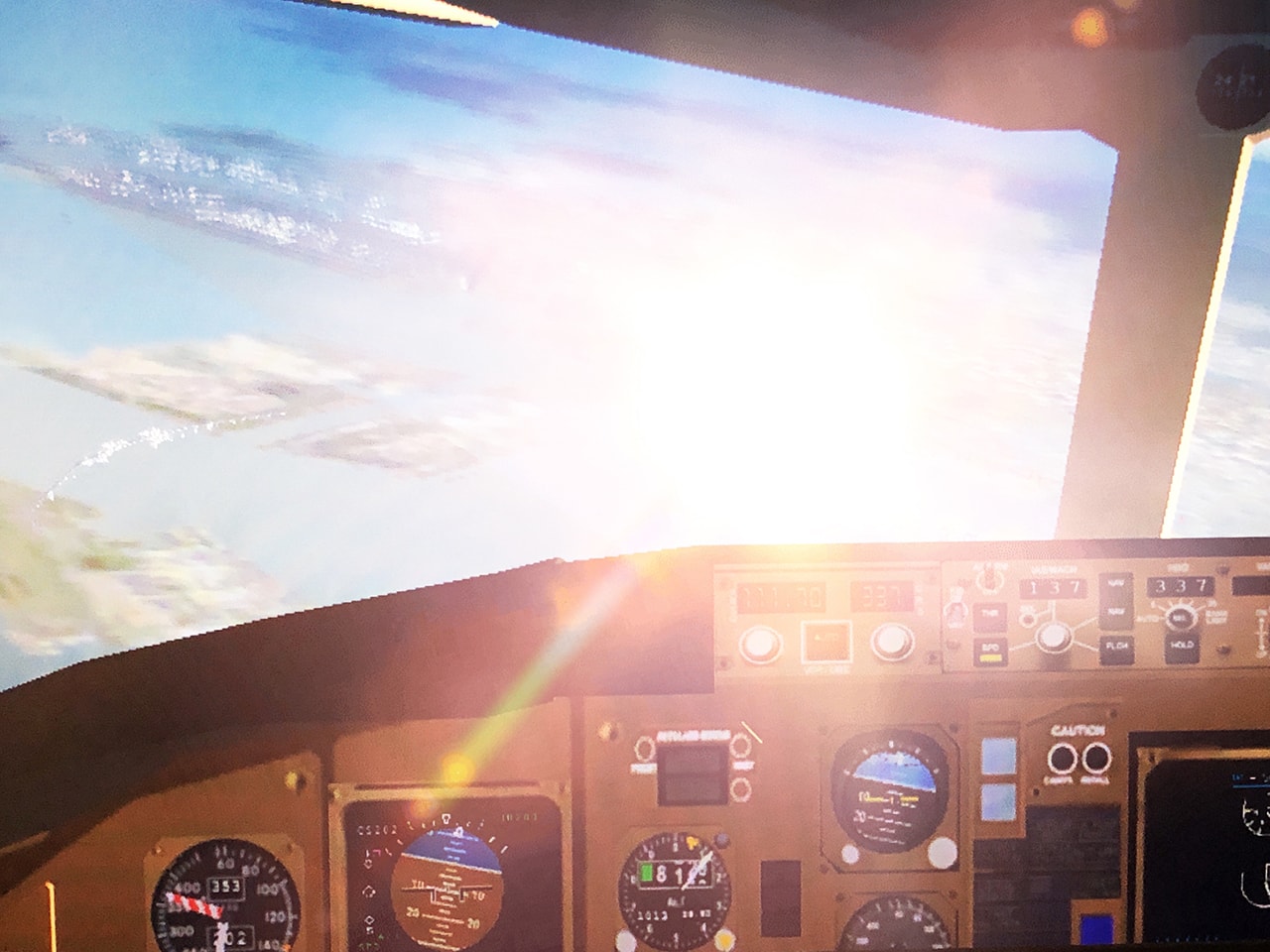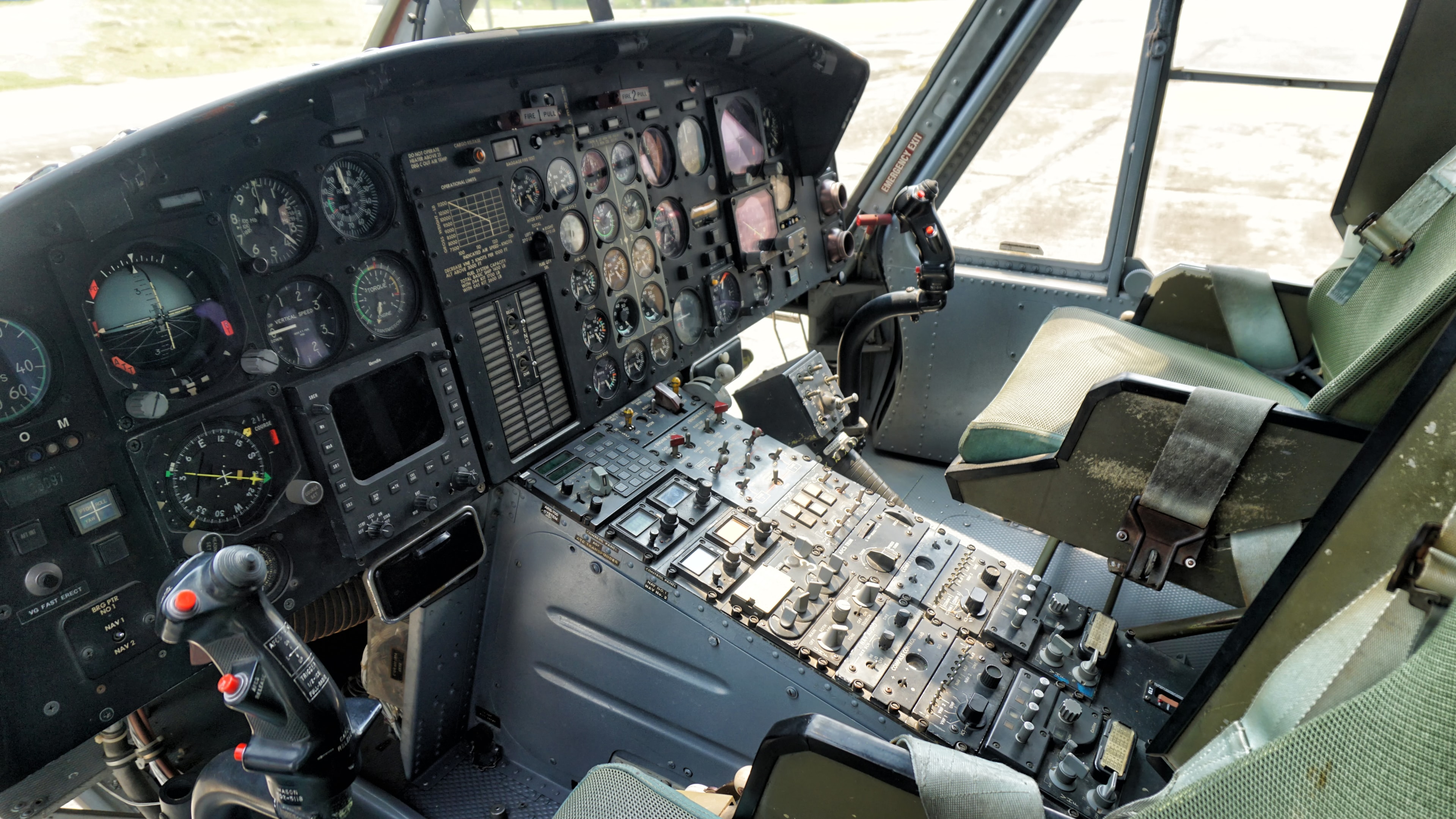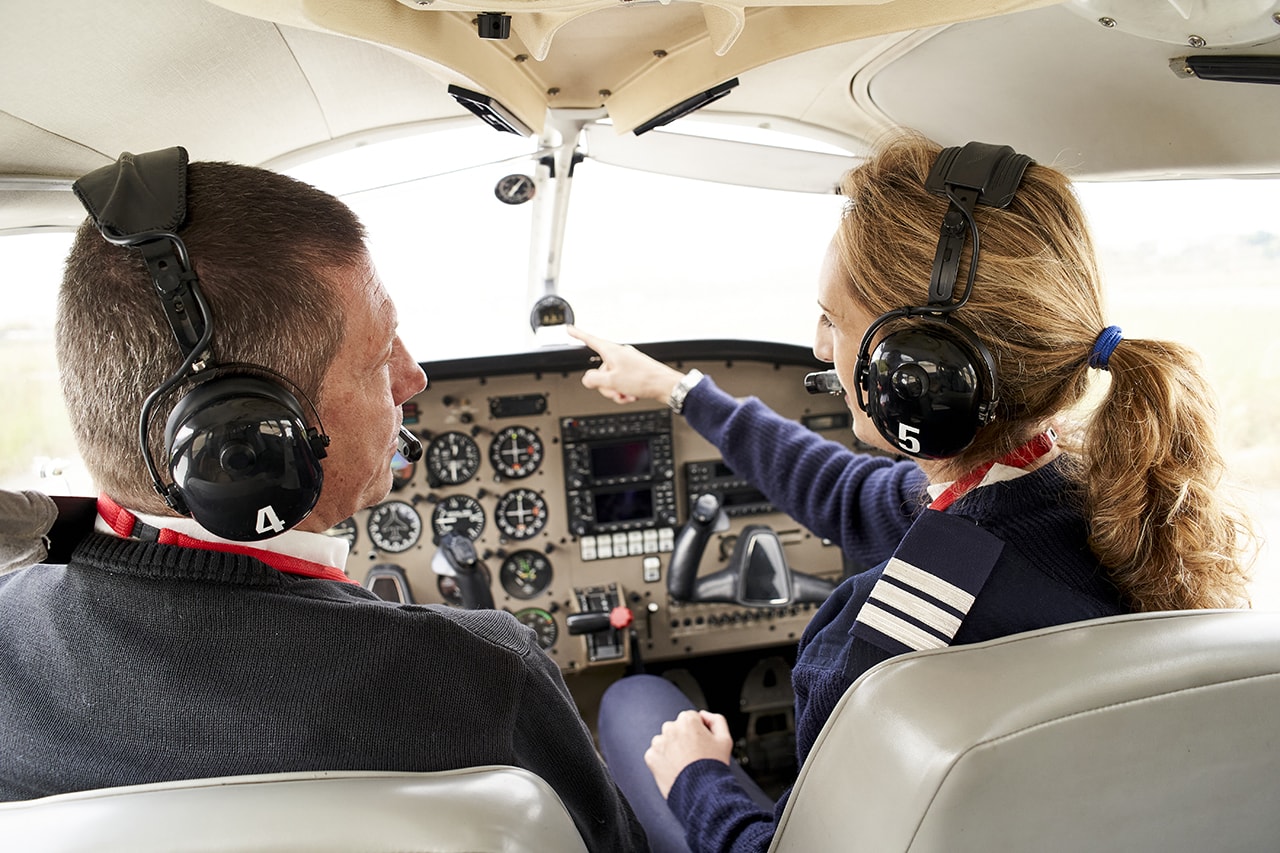Essential IFR Instrument Requirements for Safe Flight
Aug 01, 2025
What instruments do you need for IFR flight? This article outlines the IFR instrument requirements so you can be ready for anything.
Whether you're preparing for your first instrument rating or looking to refresh your knowledge, understanding the tools and procedures taught in modern IFR courses is essential for safe and effective flying.
Key Takeaways
-
IFR flight requires you to use specific instruments and equipment to navigate in low visibility, unlike VFR.
-
IFR instruments include the ‘six-pack’ and additional nav aids and emergency equipment to fly safely.
-
IFR proficiency requires continuous education, certified aircraft and compliance with regulations, including filing IFR flight plans correctly.
Understanding IFR Instrument Requirements
Flying IFR requires skill and knowledge of the instruments and equipment needed for safe flight. Unlike VFR where you rely on visual references, IFR requires you to rely on instruments to ensure safety and compliance with federal regulations.
The right instruments are not just a regulatory requirement, they are the lifeline that guides you through low visibility conditions so you can maintain control and fly safely.
Proper instruments are the eyes and ears of the aircraft in zero visibility. Knowing IFR, its importance and the role of instruments in safe and efficient flight and instrument approaches is key to successful flight operations.
What is IFR?

Instrument Flight Rules (IFR) are the rules and procedures for flying when you can’t see due to bad weather or other low visibility conditions.
IFR is different to Visual Flight Rules (VFR) and VFR flying where you fly by sight. When you fly VFR you have to use your instruments and follow specific procedures to stay safe.
Unlike a VFR flight, which depends on clear weather and outside visual references, IFR is necessary in low visibility situations where visibility is compromised, like fog, heavy rain or night flying.
Under these conditions IFR allows you to fly safe and efficient, separate from other aircraft and follow controlled airspace rules.
These conditions fall under IFR flight rules, which require careful planning and precise navigation using instruments instead of visual cues.
IFR flights require careful planning and execution, you need to be IFR rules, procedures and navigation aids savvy.
Importance of Proper Instruments
IFR flying requires a framework with specific instruments to be safe. Almost all commercial flights fly IFR because it’s safe in low vis and allows you to use the airspace efficiently.
The “six-pack” which includes the airspeed and altitude indicator is the core of these instruments at flight level.
Beyond the six-pack, navigational equipment is key to situational awareness and compliance. Continuous learning and education keeps you up to date on IFR procedures and regulations, so proper instruments matter.
Together, instruments and education keep you safe and efficient IFR.
Required Instruments for IFR Flight

Flying IFR requires specific instruments to be safe. These instruments are what provide the data to control and operate the aircraft safely. From the six-pack to additional nav and emergency equipment, each one is critical to IFR flight.
Correct instruments are more than regulations; they are tools pilots need to fly safely in low visibility. The IFR instruments required are the six-pack, additional required instruments and emergency equipment requirements.
Six-Pack Instruments
The six-pack is the foundation of IFR instrumentation, providing pilots with flight data. The six instruments are:
-
Airspeed
-
Attitude
-
Altimeter
-
Turn coordinator
-
Heading
-
Vertical speed
Each one is critical to situational awareness and safe flight.
For example the attitude indicator tells you where the aircraft is relative to the horizon and the heading indicator helps you fly the direction you intend.
Together these instruments allow you to fly the flight path even when there are no visual references. Understanding and using these instruments is key to IFR flight.
Additionally, pilots must also monitor other essential gauges such as the altitude engine fuel gauge, which provides vital information about engine performance and fuel status during IFR operations.
Additional Required Instruments
In addition to the six pack, you’ll need other instruments for IFR. One of those is a clock that shows hours, minutes and seconds.
This is required for timing approaches and navigation. En route navigation aids like ILS receivers and VOR equipment are also required to navigate the route you’ve chosen.
Modern IFR flying uses advanced technology like GPS for real time positioning and route planning. These tools give you situational awareness so you can navigate more precisely, comply with regulations and improve overall safety.
Emergency Equipment
In addition to navigation instruments, having the right emergency equipment on board is critical for IFR flying. An Emergency Locator Transmitter (ELT) is required so an aircraft can be found quickly in an emergency. The ELT sends a signal that can be detected by search and rescue teams to help recover a downed aircraft.
Carrying three spare fuses is also important so all electrical equipment including the ELT will work in an emergency. The ELT and spare fuses are critical emergency equipment that gives you peace of mind for pilots and passengers.
Navigational and Communication Equipment

IFR navigation and communication is key. These systems allow accurate navigation and communication with air traffic control (ATC) which is critical for safe flying.
Choosing the right navigation equipment suitable for the route and approach planned is essential to ensure IFR compliance and flight safety. Navigation equipment must be suitable for the route and approach planned and IFR compliant.
Reliable radio equipment allows pilots to stay in contact with ATC, get updates and coordinate with other aircraft.
This section will cover the essential navigation and communication equipment for IFR.
Radio Navigation Systems
Radio navigation systems such as VOR (VHF Omnidirectional Range) systems are critical for IFR flying.
VOR systems give azimuth information so pilots can determine their position relative to a ground station and stay on course. They operate in a specific frequency band so navigation is precise and reliable.
VOR systems help the pilot navigate more accurately especially in low visibility. Using these systems is part of IFR training and essential for safe flying.
Communication with ATC
Communicating with ATC is key to safety and coordination during IFR flying. Good communication systems means pilots can get clear instructions and updates from ATC and fly smoothly and efficiently.
Good radio communication means pilots can stay informed of any changes to the flight, get traffic advisories and coordinate with other aircraft. Continuous information exchange is key to separation and safe navigation under IFR.
Aircraft Certification and Pilot Requirements

To fly IFR both the aircraft and pilot must meet specific certification and training requirements. IFR certification for the aircraft means complying with federal aviation regulations and regular maintenance checks. Pilots must have an instrument rating and maintain an instrument rating to show they can fly IFR.
We will look at the requirements for aircraft and pilot qualifications to fly IFR. Knowing these requirements is key to safe and compliant IFR flying.
IFR Certified Aircraft
An aircraft must meet specific FAA regulations to be IFR certified. Certification involves a thorough inspection to ensure compliance with FAA regulations and instrument calibration.
Having a working ELT and spare fuses on board is required for IFR flight safety.
IFR flying requires two independent comm systems, at least one of which is two way voice for ATC comm. Regular maintenance and inspections keep the aircraft IFR compliant and safe.
Instrument Rated Pilots
Pilots must:
-
Have a current private pilot certificate
-
Be IFR proficient to get an instrument rating
-
Log IFR training flight hours with a training record endorsement from a certified instructor
-
Pass a flight test to meet the instrument rating requirements and show off your skills.
Pilots must log 6 instrument approaches in 6 months to stay IFR current. An Instrument Proficiency Check is required if current lapses more than 12 months. Continuous training keeps you current and able to fly IFR safe.
Filing an IFR Flight Plan

Filing an IFR flight plan is essential for IFR flying. An IFR flight plan must have:
-
Departure airport
-
Arrival airport
-
Route
-
Times
This is required for ATC clearance and regulation compliance. Submitting this plan in advance helps ensure you receive a timely IFR clearance and avoid unnecessary delays before departure.
An accurate IFR flight plan means efficient air traffic management and reduced risk of collision. We’ll look at filing an IFR flight plan and its benefits.
Creating an IFR Flight Plan
An IFR flight plan must have the proposed route, departure and destination airports and times. Accurate routing means efficient air traffic management and reduced risk of collision. Estimating time EN route is key to good flight management and ATC coordination.
This level of planning becomes especially important when following cross country flight procedures, where longer distances and multiple navigation segments demand greater precision.
An IFR flight plan is essential for safe flying and regulation compliance. This detailed planning means you can fly safe and efficient.
Benefits of an IFR Flight Plan
An IFR flight plan is safe and helps with navigation. Following a flight plan improves IFR navigation and gets you traffic advisories and guidance.
An IFR flight plan is better ATC coordination and safer. It’s efficient air traffic management and reduces collision risk and smooth ops.
Maintaining Proficiency and Compliance
Continuous training and following the rules is key to IFR proficiency. An IFR flight plan gets you traffic advisories and guidance.
Following the rules and ongoing education keeps you current and familiar with the latest IFR procedures. Proficiency and compliance through instrument proficiency checks and continuing ed is important.
Instrument Proficiency Check
Recent IFR flying is required to stay IFR current. If you haven’t flown IFR in 12 months you need an Instrument Proficiency Check. This ensures your skills and knowledge are current.
The check includes an equipment test and a flight test to see how you manage simulated IFR scenarios.
Flight simulators and other aviation training devices are great for IFR procedural knowledge. Simulator training is recommended to refresh and enhance your IFR procedural knowledge.
Continuing Education and Training
You need to train regularly to stay proficient for IFR flying. Consistent training and following the rules will keep you safe IFR.
Continuous learning and training will keep you up to date with the latest IFR procedures and rules. Incorporating modern flight training devices into your routine can enhance procedural accuracy and reinforce critical instrument skills. Ongoing training will keep you safe and efficient IFR.
Summary
Flying IFR is a tough and technical job that requires skill and the right gear. From the basics of IFR to using the instruments, every part of IFR is about safety and efficiency in low vis.
The importance of having the right instruments, the six pack and advanced nav aids can’t be overstated. These are the lifelines that guide you through the tough stuff.
And the certification requirements for the aircraft and pilots are strict, because IFR is a critical operation.
Regular instrument proficiency checks and continuous education ensures pilots stay current and up to date with IFR procedures and regulations.
By following these standards and continually practicing, pilots can fly safe and confident, and safe for themselves, their passengers and other aircraft in the air.
Frequently Asked Questions
What is the difference between IFR and VFR?
The main difference between IFR (Instrument Flight Rules) and VFR (Visual Flight Rules) is the conditions under which pilots fly: IFR is for flying in low visibility situations using instruments, while VFR is for flying using visual references. This is key to safety in all weather.
What are the six-pack instruments required for IFR flight?
The six-pack instruments for IFR are airspeed, attitude, altimeter, turn coordinator, heading and vertical speed. They provide all the information you need to fly safe in instrument rules.
Why is an IFR flight plan necessary?
An IFR flight plan is required to get clearance from Air Traffic Control, to fly safe and to manage air traffic. It provides all the information about the flight: departure and arrival airports, route and estimated times.
How do pilots maintain IFR proficiency?
Pilots maintain IFR proficiency by doing six instrument approaches every six months. After twelve months of currency lapse an Instrument Proficiency Check is required to get back in status, so continuous training and education is key.
What emergency equipment is required for IFR flights?
For IFR flights you need to carry an Emergency Locator Transmitter (ELT) and spare fuses, as these are essential to locate the aircraft in an emergency and to keep the electrical systems operational.
